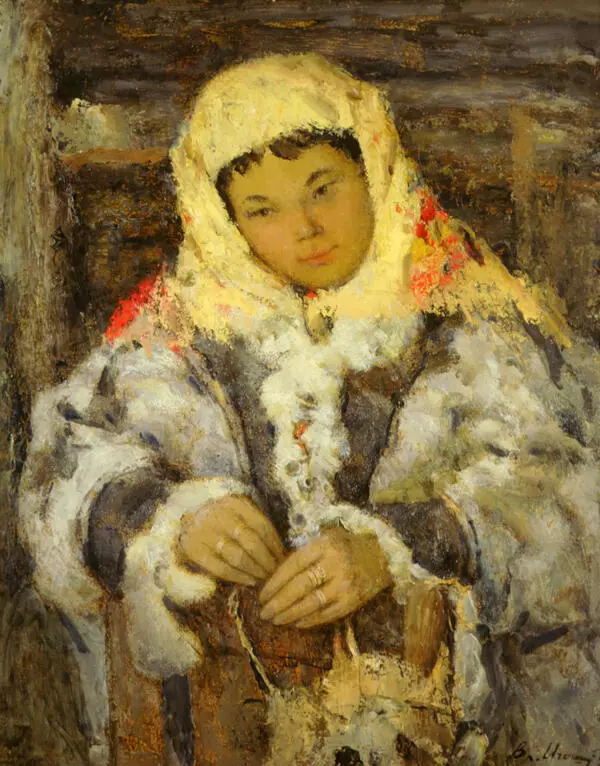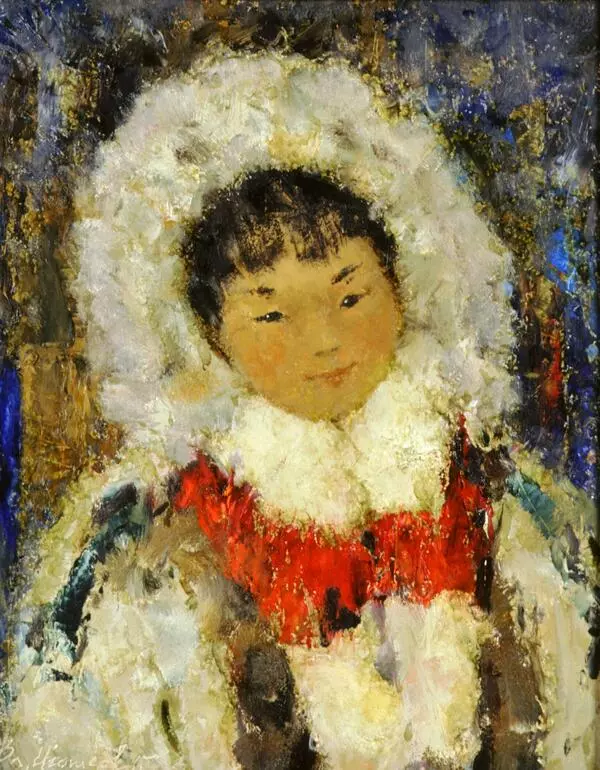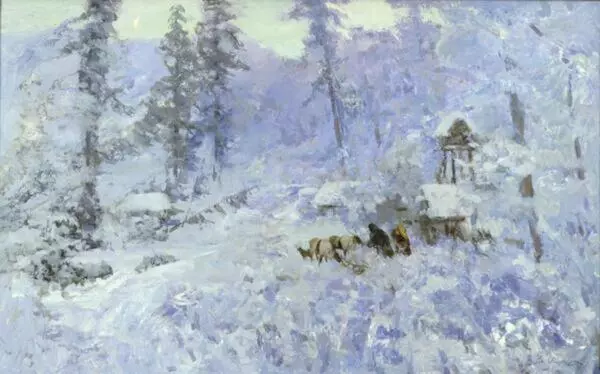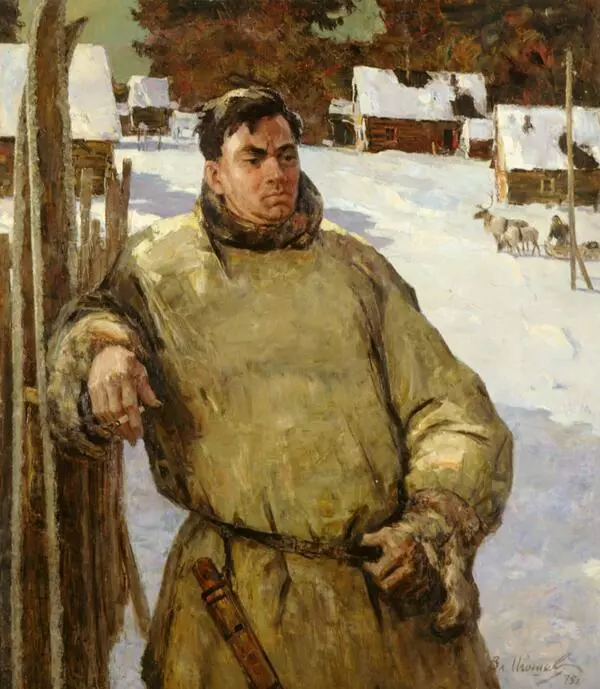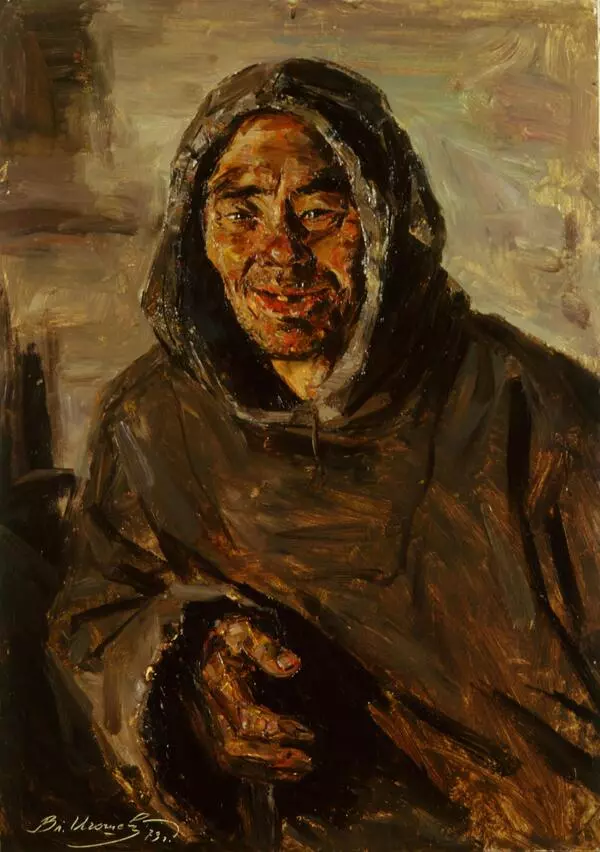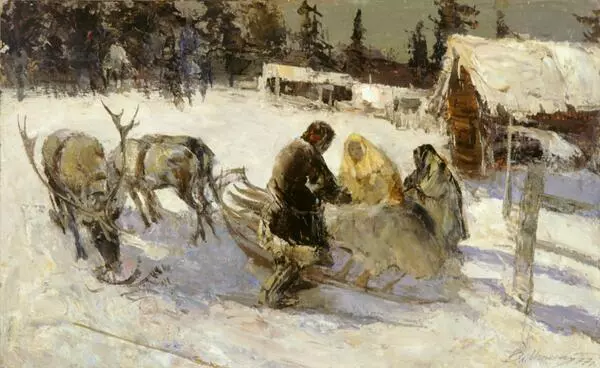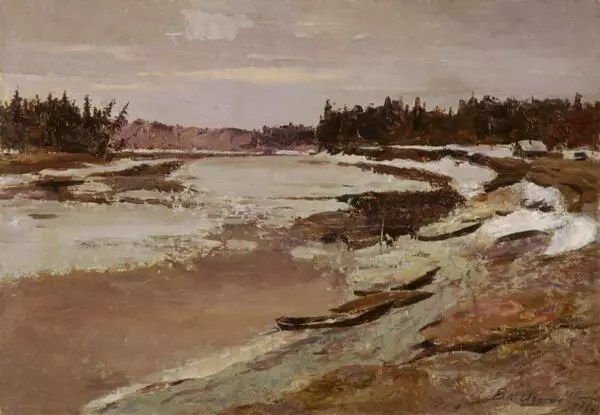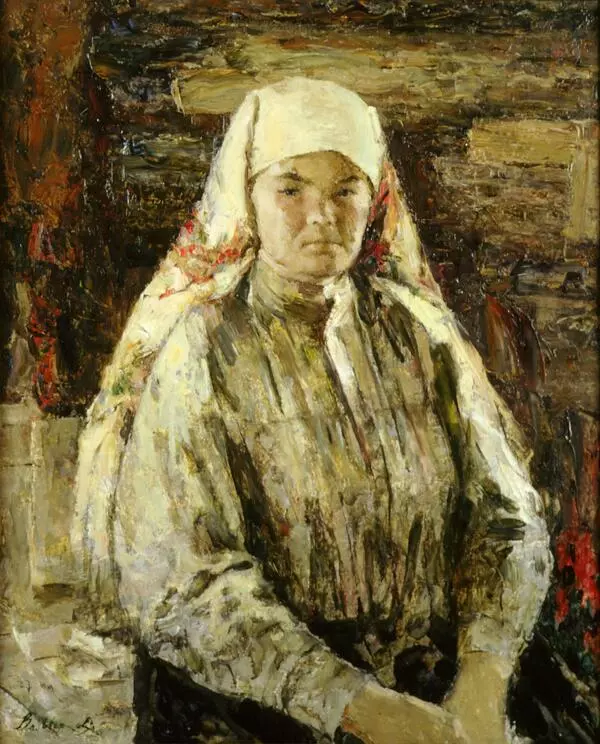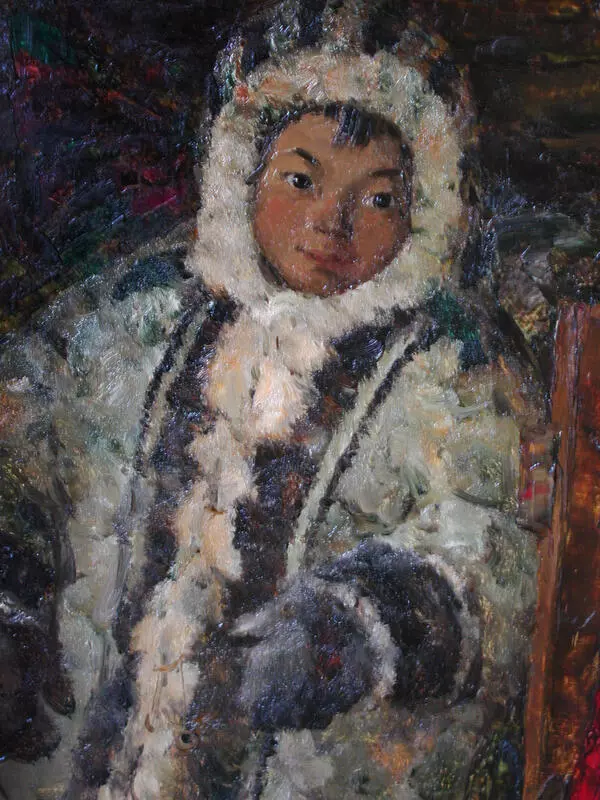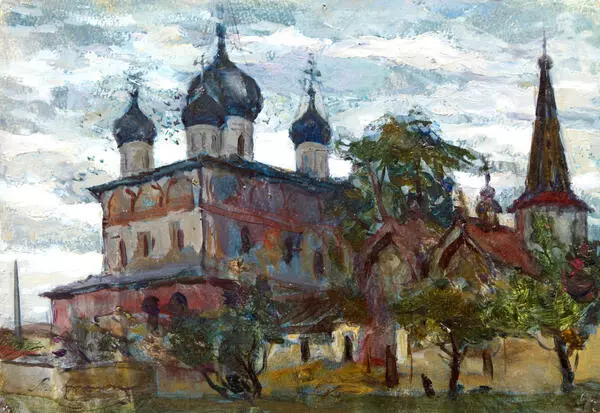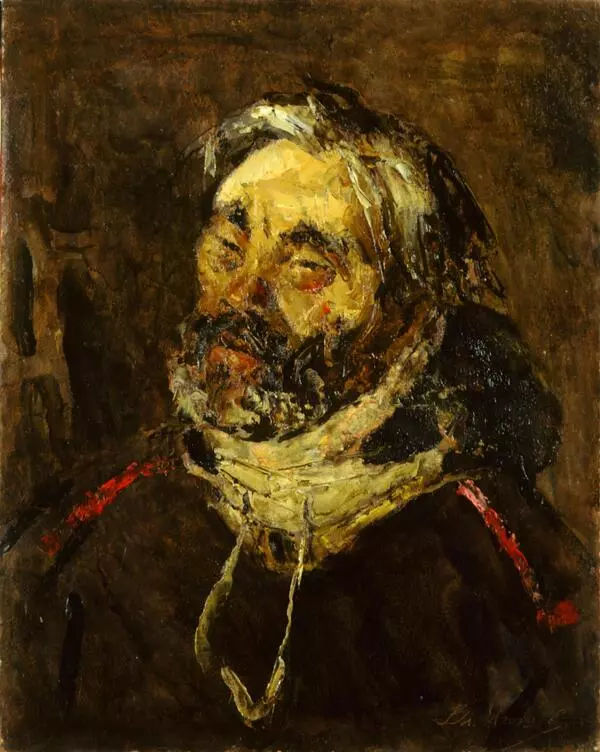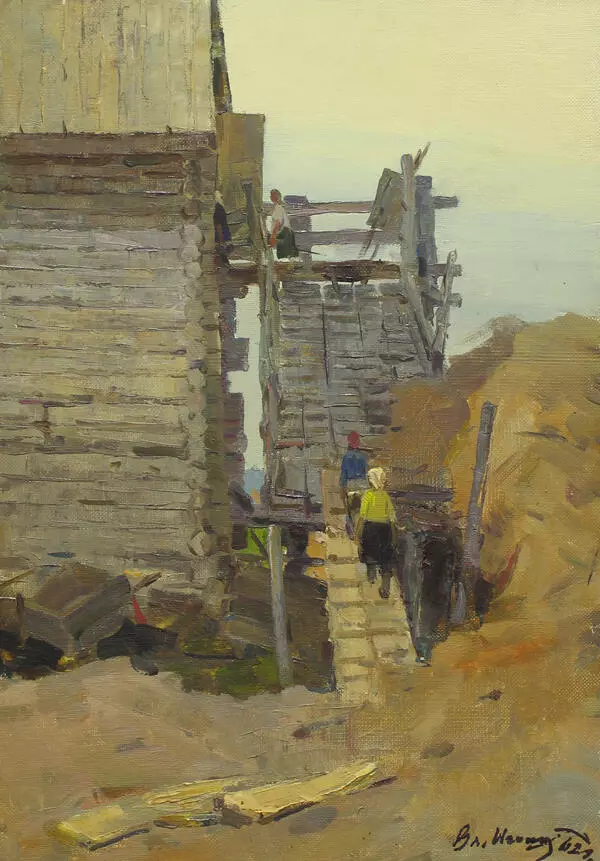The picturesque sketch showing the joyful and curious children, who humbly hug the wall of the barn, not daring to approach the painter, was created by Vladimir Igoshev in 1982. In the painting the children look like a flock of nestlings carefully observed and depicted by the painter in fear of scaring them away. In Igoshev’s portraits the children are innocently playful and touching in their heavy clothes, which is too big for them.
Igoshev first visited the North in 1954. The artist stayed in the national villages, which sparked genuine interest of the locals. There was never any lack of models; the people easily got over the fear of communication with an unknown artist, sometimes there were the whole lines of children wishing to pose for him.
The artist recalled: “I”ve been to the furthest places possible, where the people had never seen not just a painter, but a journalist. Nyaksimvol, Saranpaul”, Suevatpaul, I’ve seen them all. My sketch book and paints left a lasting impression on the locals. Mansi knew about the camera and could imagine it creating a photo with an object looking similar to the real one. But they couldn’t comprehend how a painter could make things look “similar” with the help of his brush and paints. At first the children were shy, but then they started coming to me in droves to, as they called it, “be painted”. I gave them sweets and they were ready to sit for me for hours.’
Working on his sketches, Vladimir Igoshev often used impressionist techniques. He wrote: ‘Who did I learn from? Loosely speaking, I got the idea from the Wanderers and manner of painting from impressionists. By Russian impressionist I mean Serov, Surikov, Korovin. Nesterov and his poetry of the Russian soul influenced me greatly.’ The portraits of children were painted with large and rapid brushstrokes applied with the big brush. There’s no outline, the image is made of multiple colourful brush strokes. Igoshev used to say he preferred not to make paintings based on the sketches. Instead he started from the brightest point and the conceptual part of the painting and then arranged the composition around it and worked on the colour scheme.
Igoshev first visited the North in 1954. The artist stayed in the national villages, which sparked genuine interest of the locals. There was never any lack of models; the people easily got over the fear of communication with an unknown artist, sometimes there were the whole lines of children wishing to pose for him.
The artist recalled: “I”ve been to the furthest places possible, where the people had never seen not just a painter, but a journalist. Nyaksimvol, Saranpaul”, Suevatpaul, I’ve seen them all. My sketch book and paints left a lasting impression on the locals. Mansi knew about the camera and could imagine it creating a photo with an object looking similar to the real one. But they couldn’t comprehend how a painter could make things look “similar” with the help of his brush and paints. At first the children were shy, but then they started coming to me in droves to, as they called it, “be painted”. I gave them sweets and they were ready to sit for me for hours.’
Working on his sketches, Vladimir Igoshev often used impressionist techniques. He wrote: ‘Who did I learn from? Loosely speaking, I got the idea from the Wanderers and manner of painting from impressionists. By Russian impressionist I mean Serov, Surikov, Korovin. Nesterov and his poetry of the Russian soul influenced me greatly.’ The portraits of children were painted with large and rapid brushstrokes applied with the big brush. There’s no outline, the image is made of multiple colourful brush strokes. Igoshev used to say he preferred not to make paintings based on the sketches. Instead he started from the brightest point and the conceptual part of the painting and then arranged the composition around it and worked on the colour scheme.






